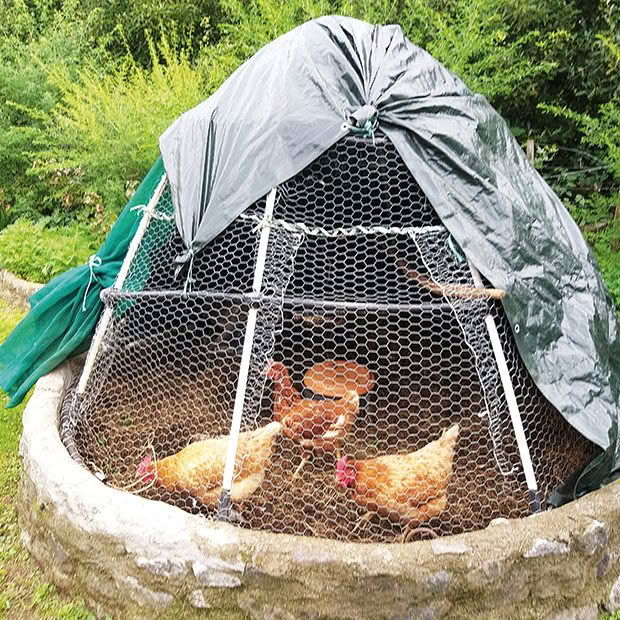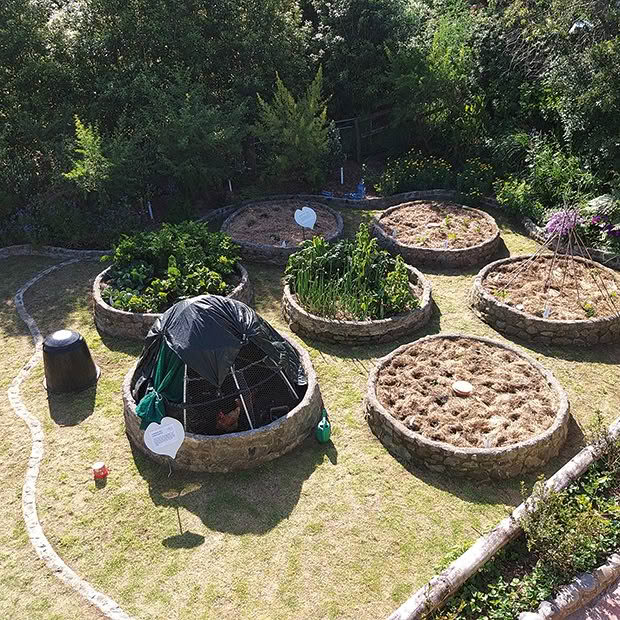The inspiration behind a moveable chicken coop

Andrea Graves checks out this moveable coop in action.
Words: Andrea Graves
I was delighted to see this system of moveable coops come to life when I visited New Plymouth’s “Korito” garden, a stalwart of the annual Taranaki Garden Festival. Owner Derina “Dee” Turner is a permaculture gardener and teacher. If you can’t get to the springtime festival to tour her incredible vegetable garden and food forest, she runs workshops. Korito features in my book, too.
Dee was also inspired by Linda Woodrow’s The Permaculture Home Garden to use a moveable coop. Here, Dee describes her reasons for using a moveable coop and how she went about making one.
“Chook tractors were initially used by permaculture practitioners but have now found their way into a lot of suburban backyards. The chooks are much healthier when they are continually moved to new ground. They don’t seem to get problems with mites, scaly leg, worms and other afflictions that seem constant in a fixed abode coop. Chook tractors are ideal as the chooks do all the work in the garden – removing old crops and weeds, manuring, turning over the ground and making the bed ready for the next crop.
“In The Permaculture Home Garden, Lisa Woodrow had built a huge dome for 12 birds, so I just copied her design but reduced it in size down to a three-chook dome for my garden.

“The idea of the circular chook tractor appealed to me more than a rectangular one as I like to mix it up a bit in the garden with different shapes of beds. There are lots of designs online for rectangular chook tractors but most require woodworking skills, whereas the dome didn’t require any building skills at all. I built that chook tractor first, and used it as a template for my mandala-shaped round garden beds.
• To make the bottom ring of the coop, I used 30mm black alkathene pipe cut and joined together in a circle.
• I then cut holes in the 30mm pipe and pushed four-metre lengths of electrical conduit (which is uv protected) into the holes, to create a dome or tent structure.
• I then made further rings with 20mm alkathene pipe to strengthen the structure and tied it all together with baling twine.
• Next I covered two thirds of the structure with one-metre-high chicken netting and attached it with baling twine, bending in the netting to the shape of the dome.
• I then secured some shade netting to create a doorway into the dome and secured this with rope.
• Finally, I put some tarp over the top of the dome to protect the chooks from the elements – rain, wind and sun.
“Inside the dome I wedged in a perch, and put in a water dish and an old lawnmower catcher filled with hay for egg laying. There are a couple of large metal pegs that secure the chook dome and it can be moved by just one person.
The chook dome gets moved around the mandala beds after I harvest the crops so that the chooks finish it off, deal with the weeds and manure the beds. When they are moved on, I just ‘lasagne-layer’ the bed up after them and plant the next crop.
“I regularly teach people how to build and manage chook tractors and build up their soil using the lasagne layering system.”
Love this story? Subscribe now!
 This article first appeared in NZ Lifestyle Block Magazine.
This article first appeared in NZ Lifestyle Block Magazine.
